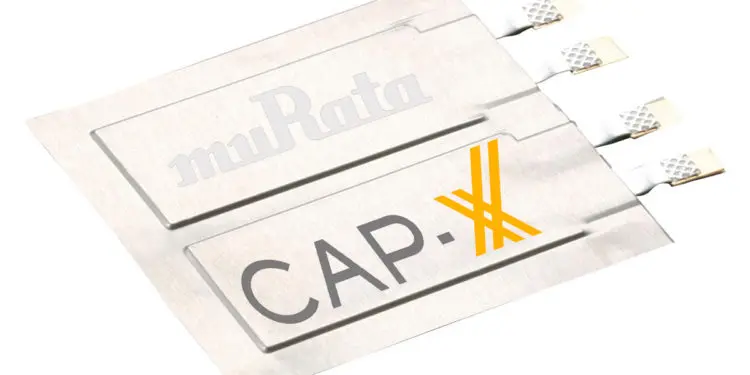CAP-XX announced it will acquire CAP-XX licensee Murata’s supercapacitor production lines, relocate them from Japan to a new factory in Sydney to arrive in stages between March and June 2020. CAP-XX will produce supercapacitors that are identical to Murata’s beginning Q3 2020.
Sydney, Australia CAP-XX, a leader in supercapacitors that deliver peak power to support or replace batteries, today announced it will acquire CAP-XX licensee Murata’s supercapacitor production lines, relocate them from Japan to a new factory in Sydney to arrive in stages between March and June 2020, and begin producing Murata’s three supercapacitor product families in Q3 2020.
Murata will also assist in introducing CAP-XX to its customers. Murata licensed CAP-XX’s patents in 2008, began production of supercapacitors in Japan in 2013, and has since significantly built its supercapacitor business. After a strategic review of its business in 2018, Murata informed CAP-XX that it wanted to focus on its multilayer ceramic capacitors and lithium batteries, and exit some of its non-core business lines including supercapacitors.
Consequently, the two companies reached agreement for CAP-XX to acquire Murata’s high-quality production lines. The companies have been working together for over 12 months to ensure the successful relocation of these production lines, and for CAP-XX to be able to produce supercapacitors that are identical to what Murata makes today, guaranteeing customers a continuity of supply.
CAP-XX considers this a compelling opportunity to acquire modern, state-of-the-art production equipment from manufacturing expert Murata, whose production lines are newer, more efficient and have far greater capacity than CAP-XX’s own. The company expects the acquisition to both increase its sales and reduce its direct production costs.
Murata is building enough inventory to satisfy the needs of customers during the interim after ceasing production in Q1 2020 until CAP-XX recommences shipments using the production lines in Q3 2020. CAP-XX plans to maintain Murata’s existing pricing on Murata’s small, thin DMF, DMT and DMH supercapacitor product families:
- DMT is a high-power, ultra-long life, high temperature supercapacitor suited for extreme applications such as solid-state drives and automotive applications. Due to its thinness, it can be assembled onto printed circuit boards (PCBs).
- DMF is a general purpose, very high power, long life supercapacitor that has very low ESR and a wider operating voltage range. It is suitable for high brightness LED flash, high-power audio, smart meters and more. It, too, can be assembled onto PCBs.
- DMH is an ultra-thin 0.4mm supercapacitor suited for smart phones, smart credit cards, wearables, 3V coin cell battery applications and other very thin IOT applications.
“We look forward to serving Murata’s customers and are committed to providing the same high quality, low cost products that they enjoy today,” said Anthony Kongats, CAP-XX CEO.
































